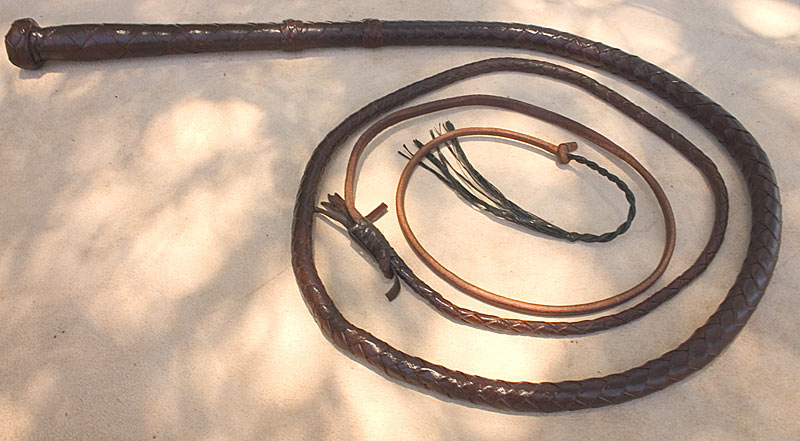How to Pick the Right Whip
Are you a horse trainer, cattle rancher or have some other profession where you need to give orders to animals? In that case, you need a good whip to make sure all your instructions are heard loudly and clearly. However, from personal experience, I’ve learned that what makes a good whip is not the same for everyone. So, what may work for your friends doesn’t necessarily need to apply to you. Your needs, age, strength, height and body size all determine what the right whip for you is. With that being said, here are some helpful tips to help you pick the right whip.
Decide Between Stockwhips and Bullwhips

The most common types of whips are stockwhips and bullwhips. The stockwhip’s design has originated in Australia and it’s still the most widely used whip on this continent. Its main purpose is to produce a loud crack as a means of controlling cattle instead of hitting. This whip has a much longer handle than other whips and is lighter, which makes it easier to control. As a result, this whip is suitable both for beginners and experts alike. Additionally, its handle is connected to the thong by a joint made of leather (called a keeper). The keeper allows you to conveniently carry the whip across your arm when it’s not being used.
On the other hand, there’s the bullwhip – the famous whip used by Indiana Jones. Opposed to the stockwhip, the bullwhip has a much shorter handle and a thong that’s braided straight out of the handle. Due to its design, it’s heavier but also a lot faster than the stockwhip, and as such it’s more difficult to use properly.
Consider the Materials
Both stock and bullwhips are made from the same materials, usually red hide, white hide or kangaroo hide or nylon and polyester. Nylon and polyester result in lighter whips which are easier to operate. They are also more affordable, which makes them a good choice for beginners to practice whit. However, as synthetic materials, they aren’t as durable as other materials. Kangaroo hide is not the best choice for a beginner as it weighs more. Red hide and white hide whips are usually stronger, more flexible and more long-lasting as well.
Pay Attention to The Number of Plaits
An important consideration when choosing a whip is the number of plaits its thong is braided in. In general, the higher the number of plaits, the livelier the whip will be. A 12 plait whip will bend more and move faster than an 8 plait whip, and a 16 plait whip will be even more supple. However, the more livelier the whip is, the more time and effort you’ll need to master it. With that being said, it’s best to try your hand with an 8 plait whip when you’re a beginner.

